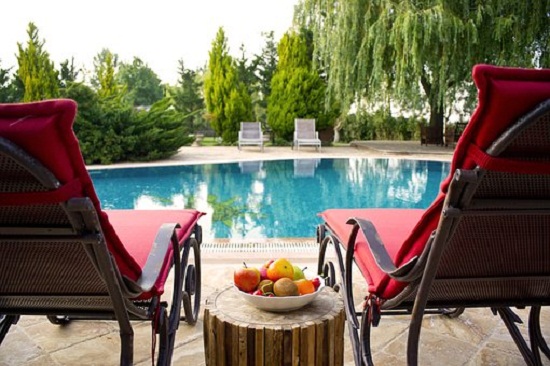Is your swimming pool old? Or, did you buy an old home with a swimming pool just now? No matter what the situation is, you need to consider resurfacing your pool. An aged swimming pool tends to develop blisters, cracks, or discoloration. But you can get rid of all of them with resurfacing. Here are some interesting facts about pool refinishing that you may want to be aware of so that you know what to do when.

The basic pool resurfacing process
Before starting the actual work, you need to empty your pool first and clean its surface with a wire brush. If there is plaster on gunite, you would need to eliminate that from the gunite shell with the help of a jackhammer, chisel, or a similar tool. As soon as the plaster is gone, you can brush the shell to clear chalky growth from the surface.
Next, you can use trisodium phosphate and muriatic acid to clean the surface off deposited minerals. At the time of applying the acid, you have to use safety equipment, such as boots, gloves, goggles, etc. to avoid any risks to your skin and lungs.
When the surface has become clean, you can resurface the pool by coating it with plaster, one of the widely-used, cheap and long-lasting resurfacing materials.
It's a DIY process mainly. Some pool owners adopt this method to save their bucks. But, this kind of practice may not prove beneficial in the long run. For the best health of your pool, you need to give it a stable, impervious surface that, in turn, can keep water quality in check. Hence, an ideal option is to hire a recognized pool resurfacing company for the job. Since they are experts in the field, they can complete a refinishing project quickly while delivering the utmost satisfaction.
The common types of pool surfaces
Apart from plaster, pebble finishes, quartz finishes, and tiles are the other popular options. Plaster is nothing but a mixture of cement, limestone or marble sand, which can run for about seven years. Pebble finishes include plaster and aggregate in the mix to make it stain-proof and hard-wearing. Little coarse and expensive than the plaster, this surface has a life of approximately 12 years. Quartz finishes also use plaster. This surface provides better stain-resistance and durability than the pebble ones. Earlier, fiberglass material was in fashion, but high pricing and less strength have led to its waning demand in the market.
However, keeping all that aside, another refinishing choice is the tiles. If you are ready to spend some money, then it's a good option. It can transform the look of your pool into a luxurious one in no time.
So, as you can understand from it, resurfacing or refinishing is nothing but removing the old finish off your pool by stripping it and spreading a new material on it. It's a fantastic solution when it comes to renovating your pool. It not only keeps your swimming pool safe but also adds more years to its lifespan.
Read More: 4 reasons how Your home is a reflection of your personality
